Hydraulic Control Unit - Brake (HCU/ESP) (Remove and Replace)
 Correction code
3310010102
FRT
1.98
NOTE: Unless
otherwise explicitly stated in the procedure, the above correction code and
FRT reflect all of the work required to perform this procedure, including
the linked procedures. Do
not stack correction codes unless explicitly told to do so.
NOTE: See Flat Rate
Times to learn more about FRTs and how
they are created. To provide feedback on FRT values, email ServiceManualFeedback@tesla.com.
NOTE: See Personal Protection
to make sure wearing proper PPE when performing the below procedure.
NOTE: See Ergonomic Precautions for safe and
healthy working practices.
Correction code
3310010102
FRT
1.98
NOTE: Unless
otherwise explicitly stated in the procedure, the above correction code and
FRT reflect all of the work required to perform this procedure, including
the linked procedures. Do
not stack correction codes unless explicitly told to do so.
NOTE: See Flat Rate
Times to learn more about FRTs and how
they are created. To provide feedback on FRT values, email ServiceManualFeedback@tesla.com.
NOTE: See Personal Protection
to make sure wearing proper PPE when performing the below procedure.
NOTE: See Ergonomic Precautions for safe and
healthy working practices.
- 2025-04-10: Added torque values for different brake calipers.
Remove
- Remove the brake HCU. See Hydraulic Control Unit - Brake (HCU/ESP) (Remove and Install).
Install
- Install the brake HCU, and back to the current procedure before bleeding the calipers. See Hydraulic Control Unit - Brake (HCU/ESP) (Remove and Install).
- Reinstall the vehicle firmware. See Software Reinstall - Touchscreen.
- Locally connect a laptop with Toolbox 3 to the vehicle. See Toolbox (Connect and Disconnect).
- Clean the area around the brake fluid reservoir breather cap and remove the cap.
- Add clean brake fluid to the full level in the bleeder reservoir.
- Add clean brake fluid to the MAX level in the reservoir.
- Install the pressure bleeder adapter onto the vehicle brake reservoir.
- Connect power supply to the bleeder tool, and then turn the bleeder tool on.
- Set the brake bleed reservoir pressure to 30 PSI, and then attach the brake bleed reservoir to the brake bleed adapter.
-
Bleed the inner valve of the LH front
caliper.
-
Bleed the inner valve of the RH front
caliper.
-
Bleed the RH rear caliper.
-
Bleed the LH rear caliper.
- Turn off and remove the pressure brake bleeder kit from the vehicle.
- Check the brake fluid level and top off as necessary.
- Install the service brake reservoir cap.
- Remove the absorbent material from underneath the brake booster assembly and the reservoir area.
-
Perform the following
routine using Service Mode or Toolbox (see 0005 - Service Modes):
- Press the brake pedal several times to verify proper feel and action.
- Exit Service Mode or disconnect the laptop if applicable (see 0005 - Service Modes).
- Install the front aero shield panel. See Aero Shield - Front (Remove and Replace).
- Install all the four wheels. See Wheel Assembly (Remove and Install).
- Install the underhood storage unit. See Underhood Storage Unit (Remove and Replace).
- Install the HEPA filter assembly. See HEPA Filter Assembly (Remove and Replace).
- Remove the steering wheel holder.
- Raise the LH front window and close the LH front door.
- Remove the vehicle from the lift.
-
Perform a road test to make sure there
is proper pedal feel and brake performance.
NoteAdd test drive correction code 00040100 as a separate activity to the Service Visit.
